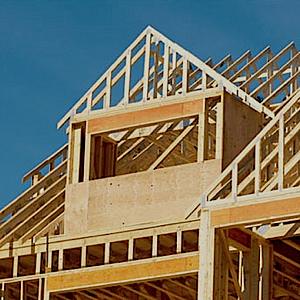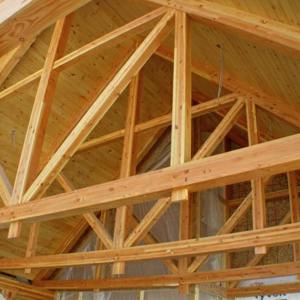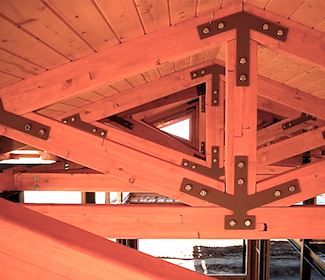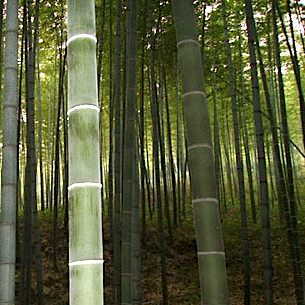Resource Efficiency

Resource Efficiency
When deciding to build a green home, one area you will certainly want to focus in on is saving as many resources as you can.
By far the largest material resource used in the construction of a home is lumber.
Wood is the largest but remember any reduction in materials that are used for the construction of a home would be considered resource efficiency. Lets take a look at some examples.
Engineered Wood Products:
Engineered wood products, such as headers, joists, trusses, and studs, are more stable and stronger than solid wood.
Engineered wood is also a more efficient use of natural wood resources.
Builders of green ETHOS homes should look for FSC or SFI certified wood, and products that don't use formaldehyde-based binders in their manufacture.
For more information about the virtues of using Engineered Wood Products in your new home project, be sure to visit our article.
Efficient Construction Framing:

Efficient Framing Techniques
This is a building method where widths of the home are based on 2 foot increments for less waste during the construction process. Standard construction components are based on 4' and 8' modules so matching your framing size to standard components will allow you to make the most out of your wood framing. This efficiency in framing will also significantly reduce the amount of waste generated on the job site. We focus on efficient construction framing because we want to decrease the enormous amount waste generated during the construction of a home.
For more information about utilizing this method of saving time and money visit the page Efficient Construction Framing for a how lumber truck full of savings ideas!
Utilize Precut or Pre-assembled Building Systems:
These systems are designed, engineered and assembled in a factory or shop miles away from their job site. These pre-built components are then transported to the job site ready for erection. This in turn eliminates numerous hours of on site time and reduction of labor costs as well.
Plus another added green advantage is the factories that manufacture these components are extremely efficient in use of material and labor and very little goes to waste, resulting in no job site waste and minimal trips to landfill. Systems include, pre-assembled wall systems, floor and ceiling joist components, roof trusses, panelized roofing systems and complete framing packages designed to save many hours of time and money.
For a additional information on these systems and what is available visit Prefabricated Home Systems.
Minimize Your Home Footprint:

Minimize Your Home Footprint
The quickest and most effective way of saving construction costs, utility costs and maintenance costs is to build smaller. A great deal of wood and money is wasted on excess instead of being invested in the design of the home.
This article will help you examine your life style and give you tips to live in a smaller home without sacrifice. Also we will give advice as to how to make a smaller home seem large and spacious.
To find out the tips to do this visit: Minimize Your Home's Footprint.
Recycled Building Materials:

Use Recycled Products
Utilizing building materials that are recycled from other existing buildings, homes and structures is a incredible way to promote green building principles. This is perhaps the most direct method for diverting materials from the landfill.
Also, there are numerous materials manufacturers and supplies that are incorporating recycled content into their new products, giving the home builder and green home designer another great resource for landfill diversion.
Another great sustainable option is to devise a recycling program on-site in concert with your building project and your contractors, reducing the cost of waste hauling and waste collection and landfill access fees. Recycle construction waste offsite, e.g. wood, cardboard, metals, drywall, plastics, asphalt roofing shingles, concrete block and many many more materials.
For more information with several good recycling ideas, visit Recycled Building Materials.
Renewable Building Materials:
Flooring material, non-timber materials, cabinet construction, reclaimed timber products, or any assortment of other building materials that are a product of a crop or other managed forest, are considered a renewable building material.
Over the last 5 - 10 years these product lines have been expanded and are more available than in years past.
Find out what materials qualify, and how to gain additional information about these products in the section called Renewable Building Materials.
Top 20 Green Building Materials:

Top 20 Green Products
This section will present our picks of the best products that qualify as being a green building product.
These are the best of the best and if you only select a few of them, you will know you are on your way to sustainable building practices.
Want to try all 20? Go for it and become an eco-friendly master in the process.
Visit Top 20 Green Building Materials.
comments powered by Disqus



























































































































































































